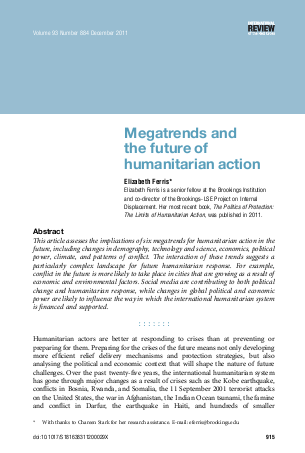
This article assesses the implications of six megatrends for humanitarian action in the future, including changes in demography, technology and science, economics, political power, climate, and patterns of conflict. The interaction of these trends suggests a particularly complex landscape for future humanitarian response. For example, conflict in the future is more likely to take place in cities that are growing as a result of economic and environmental factors. Social media are contributing to both political change and humanitarian response, while changes in global political and economic power are likely to influence the way in which the international humanitarian system is financed and supported.
Resource collections
- UN Habitat - Urban Response Collection
- Urban Response - Urban Crisis Preparedness and Risk Reduction
- Urban Response Collection - Community Engagement and Social Cohesion
- Urban Response Collection - Economic Recovery
- Urban Response Collection - Environment and Climate Change
- Urban Response Collection - Housing, Land and Property
- Urban Response Collection - Urban Crisis Response, Recovery and Reconstruction
- Urban Response Collection - Urban Resilience